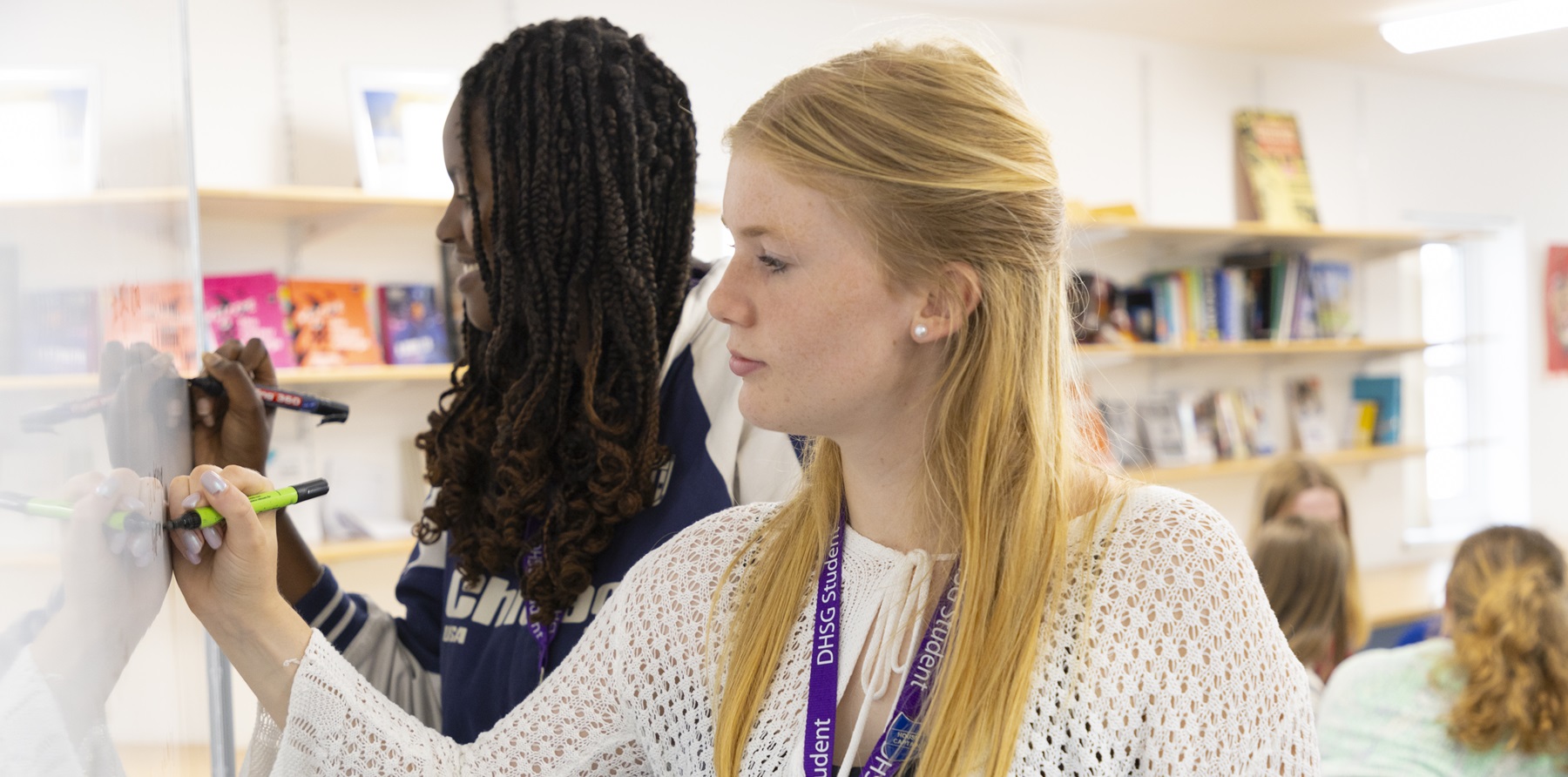Head of Department
Mr E Lamb, BA (Hons), NPQSL, PGCE
Statement of Intent
To engage with the Classical world is to engage with the foundations of Western civilisation. The ghosts of this amazing world still speak to us today in the form of a range of learning. We study literature, in particular the Odyssey and the Aeneid, and the notions of the Greek and Roman heroes through these seminal works. We also look at the image of the first Emperor Augustus, and how art was used to portray the Imperial image. Finally, we look at the part played by religion in society and how the Olympian Gods were portrayed, as well as the importance of sacrifice and feasting.

A Level Course Outline
The OCR Classics course looks at the societal foundations of Ancient Greece and Rome through the optics of literature, politics and social convention. Students will need to engage with the Odyssey and the Aeneid in the Mythological World, and the world of Religion and Power through the historical discipline, by looking at Greek and Roman religion and Rome’s re-birth as an empire in the time of Augustus from 44BC.
Higher Education and career opportunities
The study of A Level Classical Civilisation leads to Higher Education opportunities in History, Law, Drama, English, History, International Studies, Classical studies and aspects of Human Social and Political Science.
Course Content
|
Examination Board
|
OCR
|
Full details of the specification and assessment criteria can be found on the OCR website
Classical Civilisation - H008 / H408
|
|
A Level
|
Paper 1
|
Component 1 – 40% The World of the Hero An in-depth study of Homer’s Odyssey and Virgil’s Aeneid. This component looks at two of the foundational works of western literature. It explores a range of themes, from love to our relationship with the Divine and looks at the notion of being a hero from the Greek and Roman perspective.
|
| |
Paper 2
|
Component 2 – 30% Imperial Image Though literature and art, we look at how Octavian presented himself as Augustus after the death of Julius Caesar. We look at imperial imagery, and the sophistication of the first Emperor’s political messaging.
|
|
|
Paper 1
|
Component 3 – 30% Greek Religion This topic looks at the importance of religion in Greek society from the nature of the Olympian Gods, personal experiences with the Divine such as cults, and also religion in wider society such as blood sacrifices and the role religion played.
|
Curriculum Programmes of Study
|
Year
|
Cycle |
Content |
|
Year 12
|
Cycle 1
|
Unit 1
The World of the Hero
Homer’s Odyssey
Literary techniques and composition
Structure and Plot
Use of language
Literary context – from oral tradition to written work
Heroic World: characterisation and themes
Heroism, Time and Kleos (Honour and Reputation), Nostos (Homecoming)
Society, Characterisation, Disguise and Recognition. The Supernatural
Unit 2
Imperial Image
Divi filius (Son of God)
Augustus’ association with Julius Caesar
Military prowess, ancestors of the Julian Clan, association and distance from Julius Caesar’s public image
Imperator
Augustus victory in wars propaganda and reality, role of Marcus Agrippa, significance of the triumph and the triple triumph of Augustus. Victory against provinces.
|
|
Cycle 2
|
Unit 1
The World of the Hero
Homer’s Odyssey
Social, cultural and religious context
Fate, the immortals, relationship mortals and divine, justice, xenia, family, relationships men and women, role of women in Homeric epics, role of slaves.
Unit 2
Imperial Image
‘Augustus’
Augustus as religious leader, restoration of practices, temples, altars. Augustus
closeness to the Gods, Apollo, and his semi-divinity.
Culture hero
Secular games, peace and Roman society. Saturnian Golden Age
Pater Patriae (Father of the Country)
Augustus as father of the Roman state, morality, marriage, modest living. Imperial family as role models.
|
|
Cycle 3
|
Unit 1
The World of the Hero
Homer’s Odyssey and reading of Virgil’s Aeneid
Bringing together key topics of Homer’s Odyssey
Virgil’s Aeneid
Literary techniques and composition
Composition, structure and plot. Language of the epic, Homeric influence.
Heroic World: characterisation and themes
Concepts and values of Greek/Roman heroes. Major themes: Roman destiny, war, portrayal of Trojans, Greeks, Italians and Carthaginians.
Unit 2 and Unit 3
Imperial Image and Greek Religion
Later representations
Effectiveness of Augustus Imperial Image, source reviews.
Greek Religion
The nature of the Olympian Gods
Nature, anthropomorphism, relationship of mortals with Gods, roles of the Gods, hero cults, Panhellenic and localised worship
Personal experience of the Divine
Mystery cults, Eleusinian mysteries, cult of Asclepius, Oracle of Dodona
|
|
Year 13
|
Cycle 1
|
Unit 1
The World of the Hero
Virgil’s Aeneid
Social, cultural and religious context
Morals and notions of pietas (duty), contrast pietas with concepts of furor, relationship of mortals and immortals, family, relationships of men and women, role of women.
Unit 3
Greek Religion
Religion and Society
Levels of participation, politics and religion, Panathenaea and Athens,
Places of worship
Layout and functions of Acropolis in Athens, Delphi, Olympia, the games and Panhellenic significance.
|
|
Cycle 2
|
Unit 1
The World of the Hero
Virgil’s Aeneid
Historical and political background
Augustan context of Aeneid, background of the civil war, Augustus rise to power, Virgil’s relationship with Augustus, promotion of Roman Empire
Unit 3
Greek Religion
Rituals and Priests
Roles of priests and priestesses, role of women, blood sacrifices, libations, votive offerings.
Religion and philosophy
Rise of philosophical thinking, critique of Homeric Gods by Xenophanes
Socrates and impiety
|
|
Cycle 3
|
Unit 1
The World of the Hero
Homer’s Odyssey and Virgil’s Aeneid
Analysis of key themes
Exam Preparation
Unit 2 and Unit 3
Exam Preparation
|


